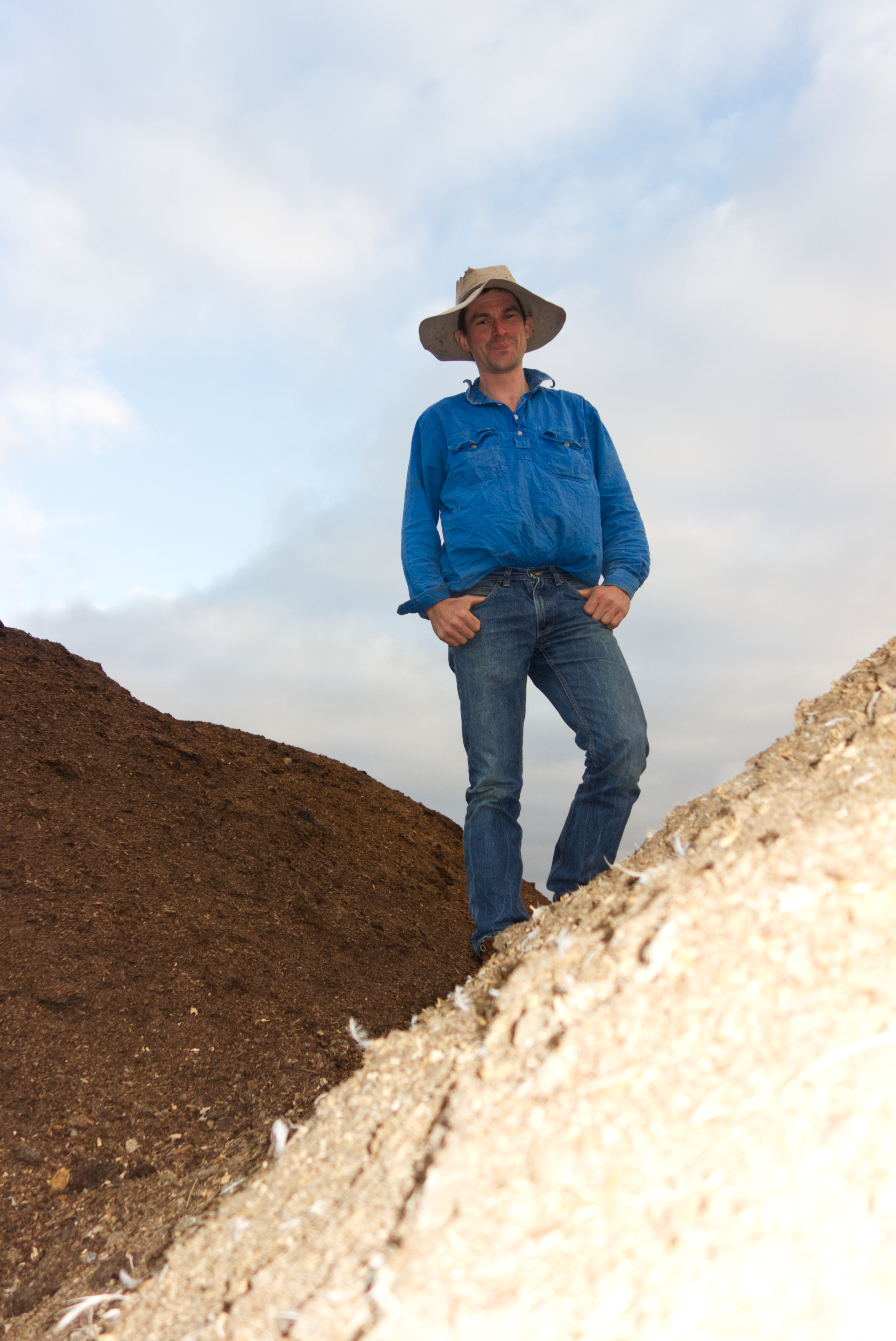From humble beginnings experimenting with organic manuring on-farm, Todd and Brad Venning have built a novel subsoil manuring machine to ameliorate waterlogging-prone soils on their property near Hamilton, Victoria.
Todd says a “fence-to-fence” paddock test on the family’s 1100-hectare property in 2014 showed that applying 30 tonnes per hectare of cow manure to the soil increased yield in the following SQP Revenue wheat crop by 10 per cent or 1t/ha.
The Vennings have also observed long-term cropping benefits over the past seven years, derived from improved soil structure and nutrient supply, where organic manure was applied to the 9ha paddock.
These include reduced waterlogging losses, as well as yield gains where subsequent crops were able to draw on organic nutrients placed at depth in the soil, Todd says.
However, the on-farm testing also highlighted the potential for further cropping gains through the development of a machine purpose-built for tackling the clay subsoil that is a major constraint to crop and pasture productivity on the family’s mixed farm.
The Vennings found that using a subsoil manuring machine developed by Agriculture Victoria’s Dr Renick Peries to apply manure to the paddock fell short of their targeted heavy clay subsoil layer.
It applied manure at a depth of 30 to 35 centimetres in the topsoil, but the heavy clay subsoil layer that prevents drainage and causes waterlogging generally starts at 45 to 50cm on the Vennings’ property.
 Todd Venning atop piles of chicken and duck manure ready to be applied to the heavy clay subsoils that limit crop productivity on his family's farm. Photo: Clarisa Collis
Todd Venning atop piles of chicken and duck manure ready to be applied to the heavy clay subsoils that limit crop productivity on his family's farm. Photo: Clarisa Collis
The need to apply manure deeper in the soil saw Todd and Brad custom-build a machine that can apply organic nutrients at a soil depth of 70cm. This is achieved with a heavy-duty machinery design that features extra-long tynes and a novel system for manure distribution and deep ripping.
Todd says the machine aims to improve the overall structure and nutrient profile of their duplex brown soils, which is expected to provide three important gains: reduced waterlogging losses, increased long-term yields and the ability to expand the farm’s cropping area.
To secure these gains, the Vennings plan to use the machine to ameliorate soils on 10 per cent of their property, year-on-year, for the next 10 years. But the amelioration works across the entire farm could be ongoing for up to 20 years, he says.
Following the initial manuring treatment at a soil depth of 70cm, the Vennings are planning a second application of manure at a depth of one metre. To this end, they intend to attach longer tynes to the machine. The second machinery pass would also be staged over a 10-year period from 2031, Todd says.
The Vennings hope that using the machine as part of a long-term amelioration strategy could enable them to increase their long-term average cereal yields from five to six tonnes per hectare to more than 9t/ha. The yield lift is expected to stem from the mix of organic nutrients, particularly immobile nutrients such as phosphorus, available to plants in the subsoil, as well as the overall reduction in crop losses due to waterlogging.
Using the machine to remediate the structure of their duplex brown soils and, in turn, reduce waterlogging also has the potential to expand the farm’s cropping area, Todd says. Yield penalties resulting from waterlogging mean cropping is currently limited to 15 per cent of the farm, with Merino sheep run on the remainder.
Todd says the ability to curb the effects of waterlogging might allow them to extend their cropping program – wheat, barley, canola, faba beans and oats – across 50 per cent of the total farm area.
More information: Todd Venning, 0428 109 245, todd@venning.net

























































